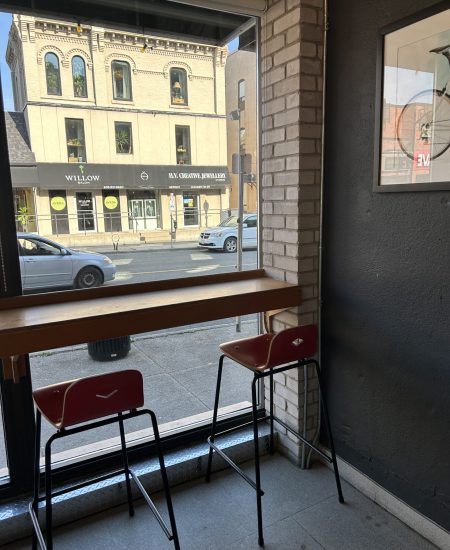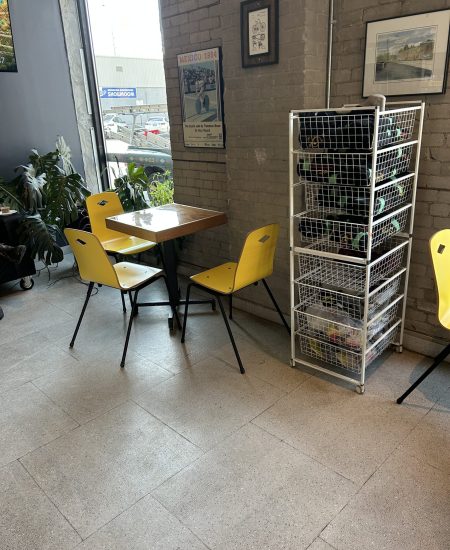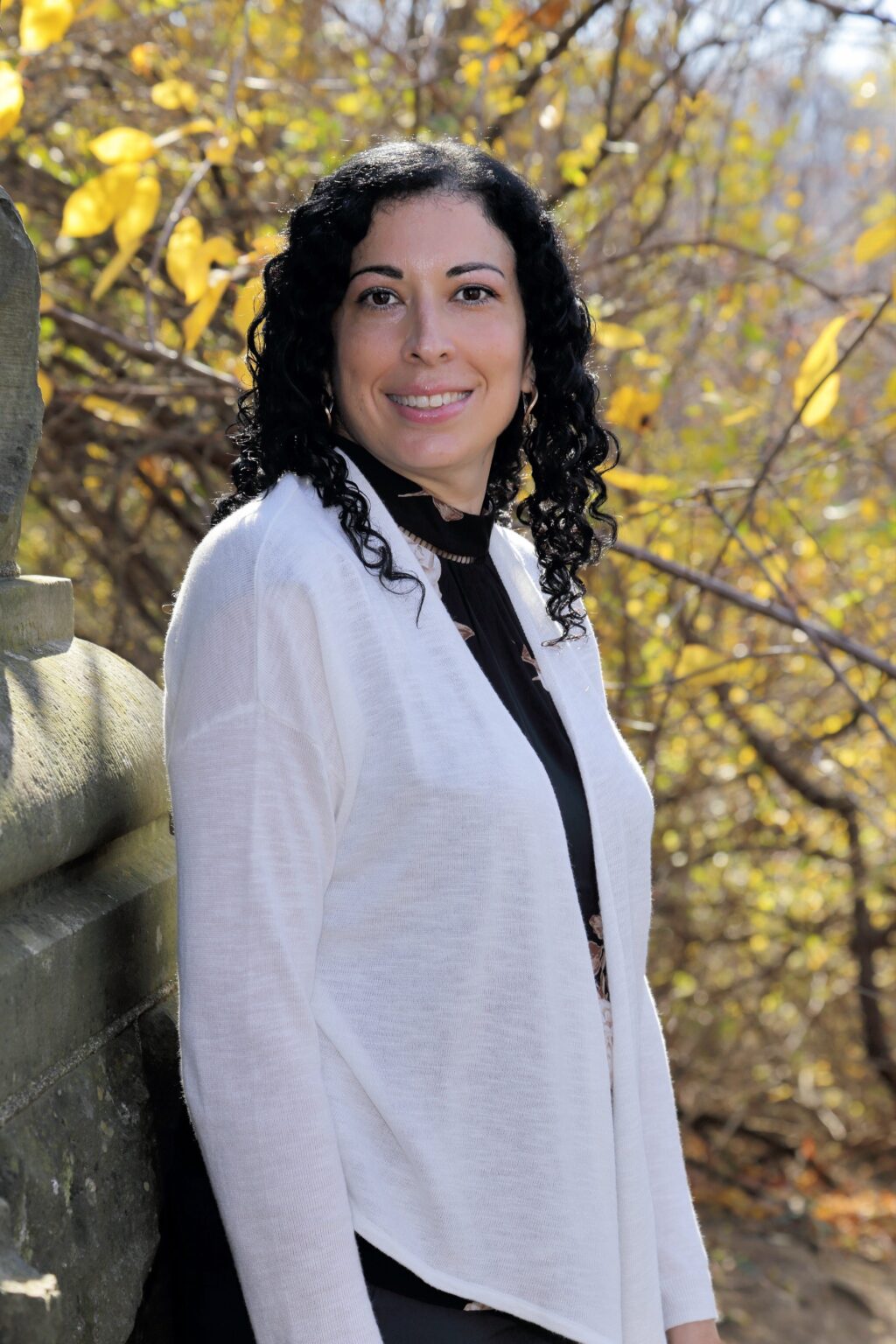Lori Sebastianutti’s Writing Space
By Lori Sebastianutti
I am not the type of person to write in public spaces. I remember my university days and how I marvelled at the students who could study in loud, communal areas — cafés, cafeterias, and common rooms. How do they do it? I wondered. How do they concentrate?
I am lucky to have, as Virginia Woolf said, “ a room of my own” in my family home. It is where I spend my days reading and writing essays for the collection I’m assembling. It’s closed off from the rest of the house by a very important feature — a door. However, an opportunity came up in the fall of 2022 to write in a setting that had intimidated me for so long.
My then-six-year-old son was starting art class at the Dundas Valley School of Art, which is a half-hour drive from our home. For eight weeks, every Saturday from 10 am to 12 pm, he would
learn the basics of cartooning. It made no sense for me to drive back and forth, so I decided I would pursue my creative passion while my son followed his.
I had the idea of writing an essay about my mother for a long time. I wanted to explore the restrictions placed on her life as a result of her Sicilian culture and Catholic faith. I used her devotion to Mary, the mother of Jesus, as well as a 500-year-old Marian festival, celebrated in both Sicily and my home city of Hamilton, Ontario, to examine how my mother sacrificed many of her own dreams, including becoming a nurse, to adhere to the expectations prescribed for her by the men in her life.
That first Saturday, the sun was bright, the breeze warm and inviting, and the crowds plentiful on King Street, a collector road brimming with boutiques, restaurants, and cafés in the east end of town. Deterred by the long line at Starbucks, I headed west a few blocks until I came to an inviting sign I could not pass by. Black, with large white letters that spelled Café Domestique, the large awning boasted splashes of red and yellow that drew my eyes in, as did a dog bowl filled with water at the base of the front steps.

Once inside, with a hot cappuccino in hand and the scent of cinnamon lingering between me and the page, I began to jot down ideas in my purple and pink floral notebook. Surprisingly, I found it easy to block out the background noise. I also found the practice of people-watching a needed distraction to clear my head when it got bogged down. Many patrons were cyclists, others were friends conversing over hot drinks and savoury sandwiches, yet others were families with young children and four-legged fur babies. The constant hiss of the large, steel espresso maker served as a reminder to stay on task, and the floor-to-ceiling windows gave me a glimpse into the world outside, where people strolled and shopped.
A different environment seemed necessary for me to write this essay, one in which I was not the main character but an observer of a life. In this busy ecosystem of people coming and going, greetings being exchanged and treats being enjoyed, I was able to block out my own story and focus on the part of my mother’s life that existed before I did.

The temperature and the leaves dropped in the subsequent weeks, and I sank deeper into my mother’s story. Café Domestique still bustled with faces, some new, some familiar, and by mid-December, it was time to bid farewell to my temporary writing space. I came away with something just as alive as the sights, sounds, and smells I encountered there, now living and breathing in the pages of issue 169.

Lori Sebastianutti is a writer and teacher from Ontario, Canada. Her essays have been published in Canadian and American journals, including The Hamilton Review of Books, The Humber Literary Review, The New Quarterly, Nurture, Porcupine Literary, Serotonin Poetry, and Broadview Magazine, among others. Her award-winning essay “Cutting Ties and Letting Go” can be found in An Anthology of Canadian Birth Stories, published by Praeclarus Press.

